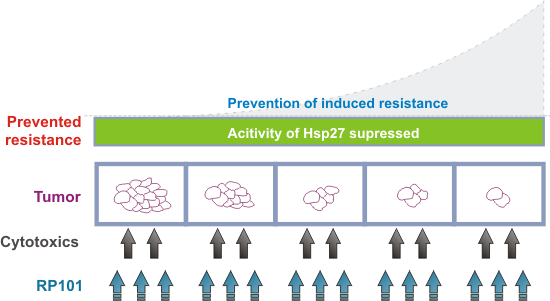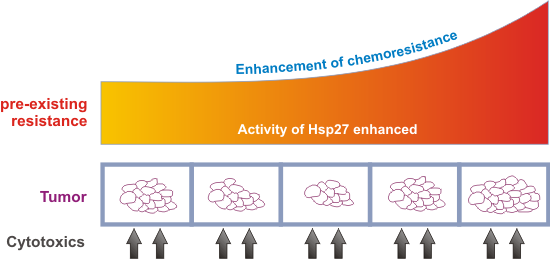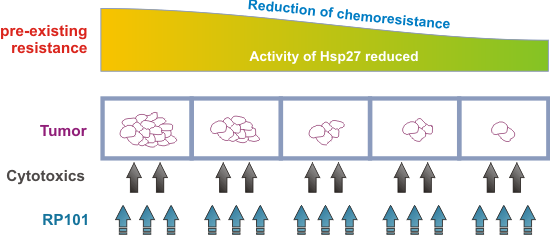What is the meaning of Chemoresistance?
The majority of cancer patients are treated with chemotherapy. The cytotoxics given to the patient drive the growing tumor cells into a programmed cell death called apotosis. During this therapy the tumor develops resistance against its treatment. The cytotoxic drugs do not work anymore and consequently, the tumor restarts growing and eventually kills the patient:

Prevention of Chemoresistance
Co-treatment with RP101 prevents induction of this resistance. The patient continues to respond to the chemotherapy. The tumor shrinks:

Mode of Action
All cells contain heat shock proteins. These are helpful for cure of external damage induced by heat, radiation and toxic substances. But cytotoxics kill tumor cells by toxicity. Therefore these HSPs have a contrary effect in the case of chemotherapy. They help the tumor to survive. A disaster for the patient. Cytotoxics enhance the activity of HSPs, and consequently induce resistance. One of these HSPs is HSP27 which acts as the key player in case of the chemoresistance.

RP101 is able to bind to Hsp27 and can suppress its activity. Thus, chemotherapy induced resistance is prevented. The tumor shrinks:

Non-Responders
The following hypothesis is suggested for the interaction of RP101 and Hsp27, and for the possible mechanism that drives the clinical results seen to date:
Thus, RP101 can also be used for patients, which do not respond to the chemotherapy (so called "Non-Responders"):

In this case RP101 is able to bind to Hsp27 and suppress its activity:
